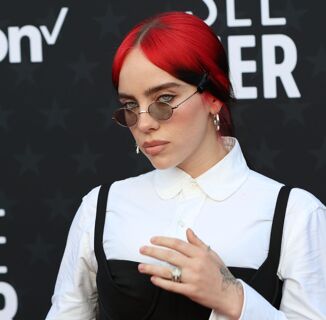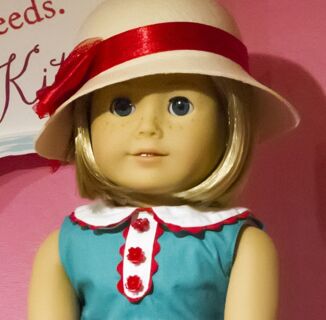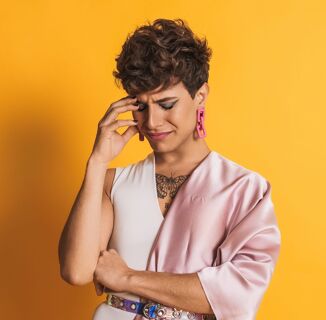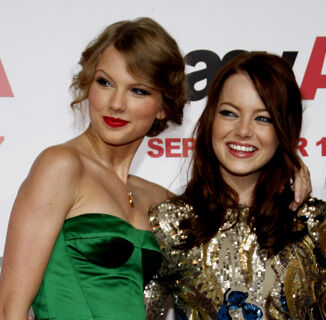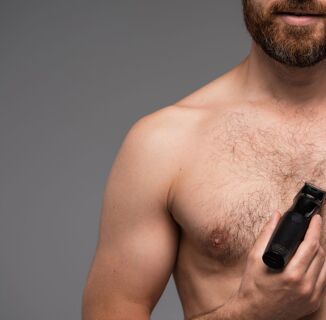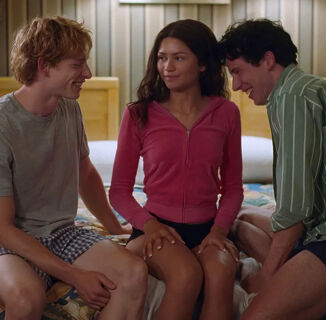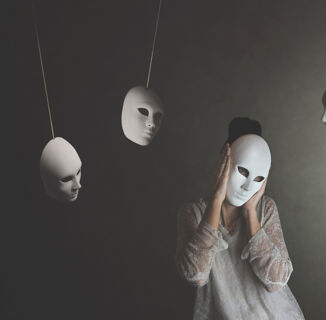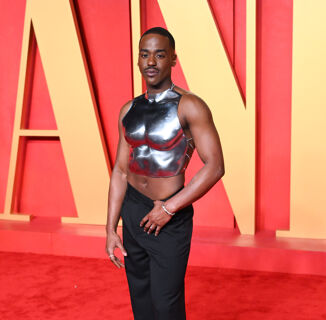Everything from big-box corporations to independent artists are spending more time, energy and resources crafting stories that expand beyond the Beckery that we’ve been served on a platter for far too long. Recent examples of powerful intersectional cultural expression can be found in FX’s newest breakout series, Pose, starring the most openly trans-identified cast in television history, and Roy Kinsey’s breakout album, Blackie: A Story by Roy Kinsey, which explores racism, violence, the Great Migration, addiction, mental illness and sexuality through rap.

But as mainstream media shifts its gaze away from the cis-heteronormative landscape to provide space for intersectional narratives to blossom, what is the cost for those yearning to share their stories without the risk of being tokenized? How does an artist, community organizer or creative laborer leverage their experience without losing the keys to their identity? Who is the gatekeeper of authenticity in an age of commercial activism?
These are all questions I had the privilege of unpacking with Kia LaBeija and her partner, Taina Larot on the heels of a new, untitled performance piece. The duo debuted the movement-based performance at the 22nd Annual Dyke March Chicago during Pride in collaboration with the kickoff of QUEER, ILL + OKAY, an international public arts initiative examining the contemporary experiences of underrepresented communities living with HIV/AIDS. Continue reading to learn how both LaBeija, a multidisciplinary artist, and Larot, a visual and movement artist investigate how to navigate exposure in the age of commercial activism without compromising their work’s authenticity and integrity.

KIA LABEIJA, multidisciplinary artist
There is a strong presence of your personal identity in your body of work and practice: How do you decide what parts of your life and experience are for public consumption and which parts are not?
K: I really bare my soul in my art. I express my truth based on where I am currently in my life. Many of the topics I focus on are things I am working through or experiencing in real time. I choose to share pieces of me in my work that need a witness or that need to exist in the world to create a level of visibility. But there are many things that I choose not to share because I give so much of myself. It’s all about what you need and how comfortable you are with letting go. Once you put something out into the world it will live there forever.
The media often has a tendency of putting underrepresented narratives in boxes or portraying them as monolithic characters. As a multidisciplinary artist that works in a variety of mediums, howdo you want to challenge people who don’t allow artists to grow beyond their experience?
K: Art is about processing the human experience. Everyone has a story that is unique to who they are. I find that when people hear about the intersectional components of my life there is a need to ask the same questions. It’s always about living with HIV, Voguing and Ballroom, and my involvement as a queer woman of color. Literally only that. And although these are pieces of me, they are not the full makeup of my being or the only things I have experienced in this life. If you look closer you can see those are not the only themes that exist in my work. There’s a moment when you realize that people expect certain things from you, because without knowing it you become a “brand.” The only way to step out of that is to break the mold and not be afraid to speak up and let people know “I have so much more to say.” Put it in your art, that’s part of the work.

What advice would you give to an artist that is negotiating boundaries of commercial exposure while also advocating for the removal of tokenization in a world dominated by white media?
K: People will constantly try to make you feel powerless or less than because you are an artist and not an institution. It’s a double edged sword when it comes to the balance between exposure and exploitation. The media is more interested in getting the story then getting the truth. Many journalists these days don’t do their homework and our personal narratives begin to sound like a game of telephone. There are many instances where the media is more interested in having the control to repackage you for their personal gain. Today brown people, queer people, body positive people, people who live with disabilities or illness are a hot commodity. Being inclusive is a major trend, but we shouldn’t have so much visibility just because there are dollar signs attached to our beings. We have always been here. As an artist you have to constantly remind yourself that the power is in the work and that there are no rules to how you choose to navigate your personal exposure. You don’t always have to say yes. It’s easier said than done, but you have to remain confident in your personal and artistic value because there is no one else that can tell your story the way that you can.

TAINA LAROT, visual and movement artist
As a visual and movement-based artist, how do you use these distinctive lenses to further develop and expand your practice in a media culture that is dominated by click-bait and higher traction?
T: I was a youth arts educator for a good eight years, so a lot of my movement and visual art was used from a teaching standpoint. I produced work with my students to broaden their creative lens. Right now I’m focusing on producing my solo work and releasing it. I don’t really give much attention to the click-bait hype. People are constantly scanning the web for a quick media fix. Visual and movement art is so easily exposed and catchy.

You are currently off of social media: How long have you been unplugged? What made you decide to remove yourself from the platforms? Do you have any challenges promoting your work while being offline?
T: I’ve been unplugged for about three years roughly, maybe longer. It was a very personal choice, it’s my meditative process. I could easily go back to my island roots and be chilling in a hammock by the ocean with a straw hat, jíbaro style. We are constantly plugged in, inhaling an immense amount of information. Sometimes you just gotta step out of the matrix. I think, for this period in my life, I’ve been so heavily fixed on developing my creative work the thought of promotion hasn’t been a challenge, yet!
What advice would you offer to young people that are interested in pursuing a career as an artist utilizing their personal and lived experiences to amplify underrepresented narratives in mass media?
T: It’s important to express your artistry freely, but remember to hold on to your power. There is so much access today, especially as a young person to tell your story through your art. It’s a form of archiving. Use all your resources to your advantage and be selective with what platforms you share that magic with.
Watch LaBeija and Larot’s untitled performance at the 22nd Annual Dyke March Chicago here and make sure to keep up with QUEER, ILL + OKAY as they continue to expand artistic collaborations and programming around the globe.
More about QUEER, ILL + OKAY (QIO):
QIO is a multidisciplinary arts and educational series of artistic disciplines including performance, workshops, film series, and educational panels exploring, challenging and reinventing narratives about the contemporary experience of queer individuals and their relationships to HIV/AIDS and other forms of mental and chronic illness. In collaboration with a variety of international sponsors such as AIDS Healthcare Foundation, People’s Energy, and Grindr, QIO will be providing coordinated support and resources to local arts organizations in Bujumbura, Johannesburg, Mexico City, Mumbai, Sao Paulo, and Toronto to present their own programs alongside QIO during International AIDS Awareness Month in December.
Help make sure LGBTQ+ stories are being told...
We can't rely on mainstream media to tell our stories. That's why we don't lock our articles behind a paywall. Will you support our mission with a contribution today?
Cancel anytime · Proudly LGBTQ+ owned and operated
Read More in Culture
The Latest on INTO
Subscribe to get a twice-weekly dose of queer news, updates, and insights from the INTO team.
in Your Inbox

